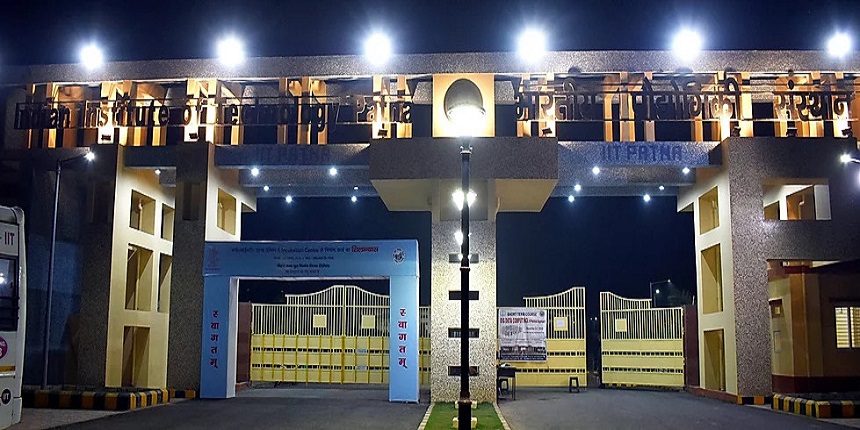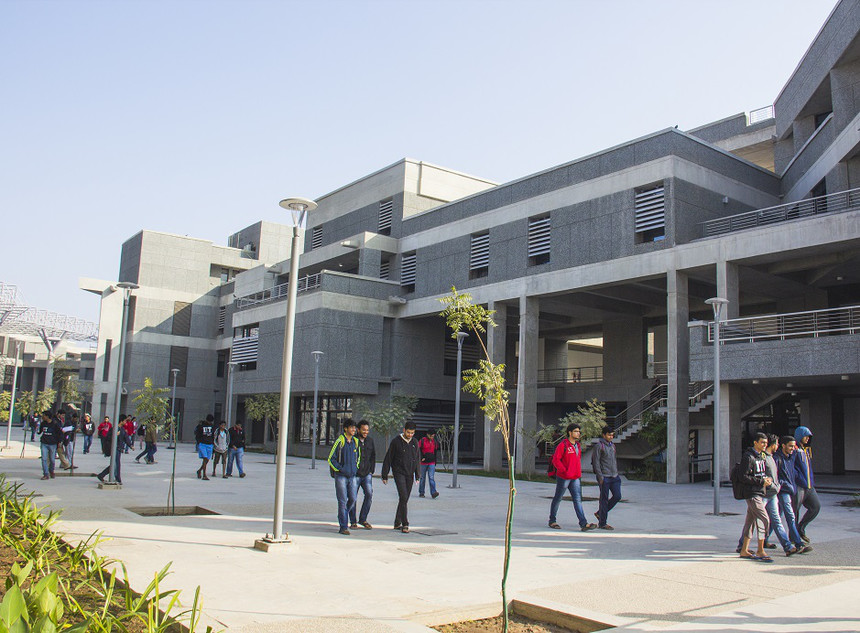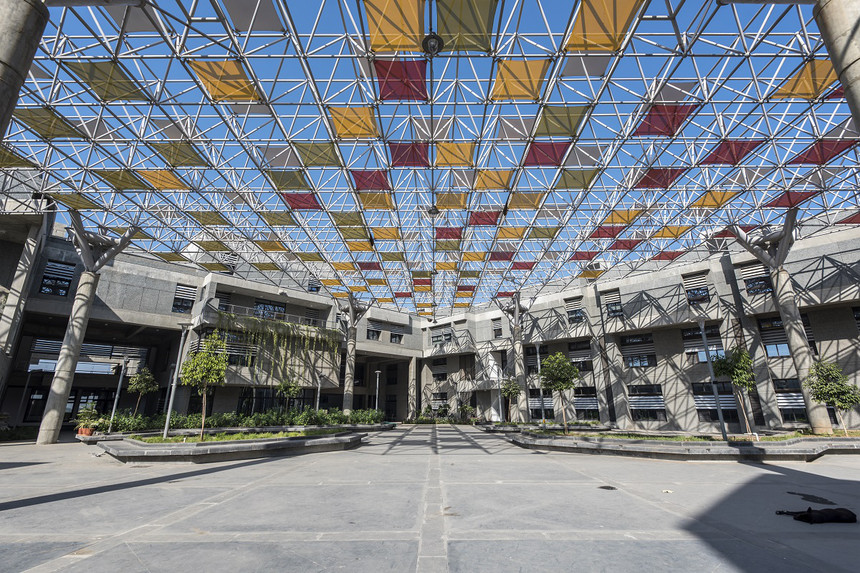
NEW DELHI: Pine needles, abundant in the Shivalik Hills, were used as fuel on a small scale by families of the Kamand area of Mandi district, Himachal Pradesh. Indian Institute of Technology Mandi turned it into a business for women.
Since 2016, when the institute started its Empowering Women of Kamand, or EWOK programme, it has helped women set up units that cost about Rs 6 lakh that form briquettes out of pine needles for use as biofuel.
“Researchers at IIT Mandi worked on making the process more efficient for the users,” said Timothy A. Gonsalves, former director IIT Mandi. By 2019, when EWOK was registered as a society, it had helped 12 women entrepreneurs set up businesses.
Similarly, IIT Indore got its area put on the bus route benefitting all residents around them and IIT Patna is organising biogas plants for surrounding villages.
In just 10 years, the new entrants to the network of Indian Institutes of Technology have settled in.
Nearly six decades after the first IIT came up in Kharagpur, West Bengal, in 1952, eight new IITs were established over 2008-09. These were at Ropar in Punjab, Bhubaneswar in Odisha, Gandhinagar in Gujarat, Hyderabad in Telangana, Patna in Bihar, Indore in Madhya Pradesh, Jodhpur in Rajasthan and Mandi in Himachal Pradesh. The IIT Act was later amended in 2012 to accommodate them.
The eight have progressed more rapidly than most institutions despite being set far from metropolises and facing many challenges in the initial years. Careers360 spoke to some of them to trace their decade-long journey.
Old and new
In 2003 the centre formed the SK Joshi Committee to assess the suitability of seven engineering colleges for transformation into IITs. Only Banaras Hindu University’s engineering college was converted into an IIT in 2012.
A number of factors contributed to the expansion of the IIT network in the early 2000s. The Indian software and information technology (IT) sector was booming and engineering jobs were plentiful. India’s youth population had risen dramatically straining existing education resources. And there was a “regional imbalance” in the distribution of these premier technical institutions.

To address all of these concerns, in 2008, the government announced eight entirely new IITs in states that didn’t have any. They were mentored by established IITs that set standards and guided the new ones.
New paths
Starting from scratch, the new IITs chose to do things differently.
IIT Mandi starts its B.Tech programme with a “reverse engineering” project. Disassembling products to see the functions and interactions of the constituent parts allow students a clearer understanding of scientific and engineering principles.
The institutes are also quick to react to the industry’s needs. In 2019, IIT Mandi became the first institute to introduce a full-fledged B.Tech. degree in data science and engineering to ensure its graduates have “future-proof expertise”, said the former director, Timothy A. Gonsalves.
Some, like IIT Indore have galloped ahead in domestic and international institutional ranking systems. In 2019, the institute was placed at 13 among engineering institutions in the National Institutional Ranking Framework, the government’s ranking system for higher education. Even in global rankings, the new IITs are not far behind the old ones.
“In very little time and the midst of fierce competition with the best around the globe, we have made a niche for ourselves,” said Neelesh Kumar Jain who joined IIT Indore in its early days and is now its officiating director.
Improving gender diversity
While the improvement in gender diversity in the IITs has been result of the collective effort of all IITs led by the IIT Council, the new ones took some steps of their own.
IIT Mandi waives tuition-fee for women in their first year and offers a stipend of Rs 1,000 per month for ten months beyond which it is subject to performance. In 2019-20, 20.22 percent of its total enrolment in B.Tech were women.

All eight have been able to ensure at least 20 percent representation of women in 2019-20. In 2008, about nine percent of IIT Gandhinagar’s students were women. In 2019-20, their representation stood at 26 percent. “In fact, the percentage of female students in postgraduate programmes is now 35 percent,” said Sudhir Jain, its director.
Shifting to their permanent campuses helped, said Pushpak Bhattacharyya, director, IIT Patna. “Once we shifted to our permanent campus, the numbers improved. In 2019, 61 girls joined the B.Tech programme,” he said. It is not hard to see why the young women waited.
Teething problems
Despite sharing the brand, the fledgling IITs were a far cry from their well-heeled older counterparts. They began functioning in 2008-09 from transit campuses and with limited resources.
Faculty members of IIT Patna stayed many kilometres from the transit campus in Pataliputra Colony. IIT Mandi had to hold Master of Science and PhD programmes in a temporary campus located 25 kilometres from the main one at Kamand. A hotel close to the transit campus served as a hostel.
They were still better off than IIT Indore which was almost a travelling institute for the first few years. From July 2009 to December 2015, it operated from four different transit campuses, said Neelesh Jain.
The government had allocated over Rs 6,000 crore under the 12th Five Year Plan (2012-17), for the new IITs. However, nearly all faced construction delays and by 2014, the costs had ballooned to nearly Rs 15,000 crore.
“We had our share of problems in getting land,” said Neelesh Jain of IIT Indore. “Clearances, land acquisitions and securing the boundaries have taken their own time.”
Similarly, IIT Patna faced a range of problems, including hostility from residents of Bihta in Patna district where it was allotted land. “We started the first phase of construction in 2012,” said Bhattacharyya. “Many times construction has been forcibly brought to halt by the aggrieved villagers whose compensation was either delayed or not fairly monetized. A number of times miscreants also created ruckus and manhandled the engineers or workers. Nevertheless, we amicably resolved the conflict through several rounds of discussions with farmers, villagers, local administration and state government at different levels.”
IIT Patna was the first of the eight to move to a permanent campus in July 2015. IIT Mandi now has a 538-acre campus with housing for 1,655 students, 125 teachers and 61 other staff members.
The last, IIT Ropar, shifted in 2019, close to a decade after establishment.
Faculty shortage
Despite all the trouble, getting campuses running was still a minor challenge compared to getting high-quality faculty. Teachers working in established institutes were reluctant to move to these institutes, set in picturesque locations but far from the metropolises.
So, the new IITs recruited ‘fresh PhDs’ and even brought retired professors on contract.
“We don’t see younger faculty as a drawback, they come with fresh and exciting ideas to engage with students and are far more open to innovations,” said Sudhir Jain of IIT Gandhinagar. “Almost 60 per cent of our faculty have PhDs from leading overseas institutions, such as Cambridge, Harvard, MIT, Urbana, Uppsala, etc. About 80 per cent of faculty have earned their graduate degrees or have postdoctoral experience abroad.”
The institutes have also worked to attract teachers. “Novel initiatives such as endowed faculty chairs, fellowships, attractive research support, international postdoc faculty opportunities, etc. have attracted world-class faculty to IIT GN.” Sudhir Jain added.
Solving local challenges
Most new IITs came up in places that are still developing. The new IITs have attempted to address many of the regional challenges related to agriculture, energy, waste-management, education and employment.

Researchers at IIT Mandi are working in the domain of “smart agriculture” which involves giving Himachal Pradesh farmers easy access to a range of relevant information – on climate change and weather prediction, land, soil, water, seed and market linkages – through a single platform.
Under Unnat Bharat Abhiyan, a scheme linking technical institutes with villages that need their innovation, scholars from IIT Patna have surveyed Bihar villages for establishing biogas plants. “We got money sanctioned for the installation of biogas plants in two villages and are working with BTDC (Biogas Training and Development Centre) for installation of eight such plants in the adopted villages,” said Bhattacharyya.
The IIT Indore community helped villages close by dispose garbage safely and become open-defecation-free, or ODF.
Some interventions are simpler. Students of IIT Patna conduct regular classes for the village children covering mathematics and science, spoken English and computer literacy. Students from IIT Indore mentor children from five villages the institute has adopted. “We have developed computer labs in nearby schools,” said Neelesh Jain.
Placement conundrum
However, both their locations and the early years of struggle impacted placements at the new IITs.
Many seats would go vacant as students favoured National Institutes of Technology (NITs) or Indian Institutes of Information Technology (IIITs). Similarly, recruiters were wary due to the poor infrastructure, faculty shortage and absence of a strong alumni base.
But as the number of graduates grew, recruiters started coming. “To give you some figures, in the last three years, the number of companies that visited IIT Patna has increased in sequence from 88 to 95, and then to 104 in the current session,” said Bhattacharya. “The number of students securing internships too has steadily increased over the past few years.” He believes the concerns are “misplaced” as recruiters from the most generous of corporations – such as Amazon, Microsoft and Goldman Sachs – recruit from these institutions.
Without the concept of a day-zero or day-one being reserved for the top companies, the placement process stretches over a long period of time and is different from that of older IITs. “It is less stressful for students,” added Bhattacharyya. “We provide ample opportunity for students to evaluate and take up a career of their choice.”
Similarly, IIT Mandi schedules interviews for a maximum of two companies in a day and students are not required to appear for multiple interviews in one day.
The authorities at IIT GN have chosen not to advertise their placement statistics during outreach activities. “We consciously promote IIT Gandhinagar as an extremely vibrant, innovative and evolving learning environment,” explained Sudhir Jain, its director. “We would prefer that students choose us for this reason rather than metrics around “packages”.”
Also read:
- NIRF Ranking 2020: IIT Madras best institute, IISc, JNU, BHU follow
- ARIIA Ranking 2019: Top private universities nurturing entrepreneurship and start-up ecosystem
Write to us at news@careers360.com.
Follow us for the latest education news on colleges and universities, admission, courses, exams, research, education policies, study abroad and more..
To get in touch, write to us at news@careers360.com.